[ad_1]
Earth Day was originally conceived by environmental activist John McConnell back in 1969. But it was U.S. Senator Gaylord Nelson who founded it as an environmental teach-in held on April 22, 1970. Many people consider this event the birth of the “Going Green” movement.
Observed every year on April 22, this day of environmental awareness has grown by leaps and bounds over the past 48 years. From the historic 2016 singing of the Paris Climate Agreement to the 2017 March For Science, it has become a day of great significance for eco activists.
Coordinated by the Earth Day Network, there are now annual events held in 193 countries around the world to promote the idea that we, as humans, should protect the environment.
But the truth is that we shouldn’t wait for Earth Day to practice environmental stewardship.
Green living is a lot easier than you might think. It doesn’t require some big, grand gesture, but rather lots of little incremental changes that collectively can reduce our negative impact on the planet.
To help you navigate the path to more sustainable living, we’ve outlined 60 Earth Day tips you can use everyday on everything from how to reduce/reuse/recycle and eco-friendly gardening to saving energy and water and traveling responsibly.
We call them “baby steps to going green.”
READ MORE: What is Ecotourism? (History & Principles of Responsible Travel)
- What Going Green Means
- Reduce/Reuse/Recycle Tips
- Kitchen Green Tips
- Eco-Friendly Bathroom Tips
- Home Energy-Saving Tips
- Water Saving Tips
- Organic Gardening Tips
- Gas Saving Tips (For Road Trips)
- Green Travel Tips
- Responsible Animal Encounters
- Additional Resources for Going Green
WHAT GOING GREEN MEANS
So what does it mean to “go green”? It’s really all about learning how to live a more mindful, eco-friendly, and sustainable lifestyle, and then putting that knowledge into practice.
Inspiration for this transformative movement is everywhere. There are countless blogs, books, and videos offering advice on a wide variety of green tips and environmental subjects.
These days it’s easy to find info on anything from alternative energy, biodiversity, and conservation to organic farming, responsible travel, and sustainable development.
No matter who you are or where you live, there are hundreds of ways to go green in virtually every aspect of our daily lives. There are ways to reduce our negative impact on the planet when we clean our homes, tend our gardens, go to work, eat, travel, use water, and dispose of waste.
Once we begin to embrace a more ecologically responsible way of life, we find ourselves seeking more ways to take a less exploitative, more regenerative approach to natural resources. What started for us back in 2008 as a budding interest is now a driving passion for protecting the planet.
As more people join the increasingly mainstream movement, our collective impact becomes much greater.
READ MORE:
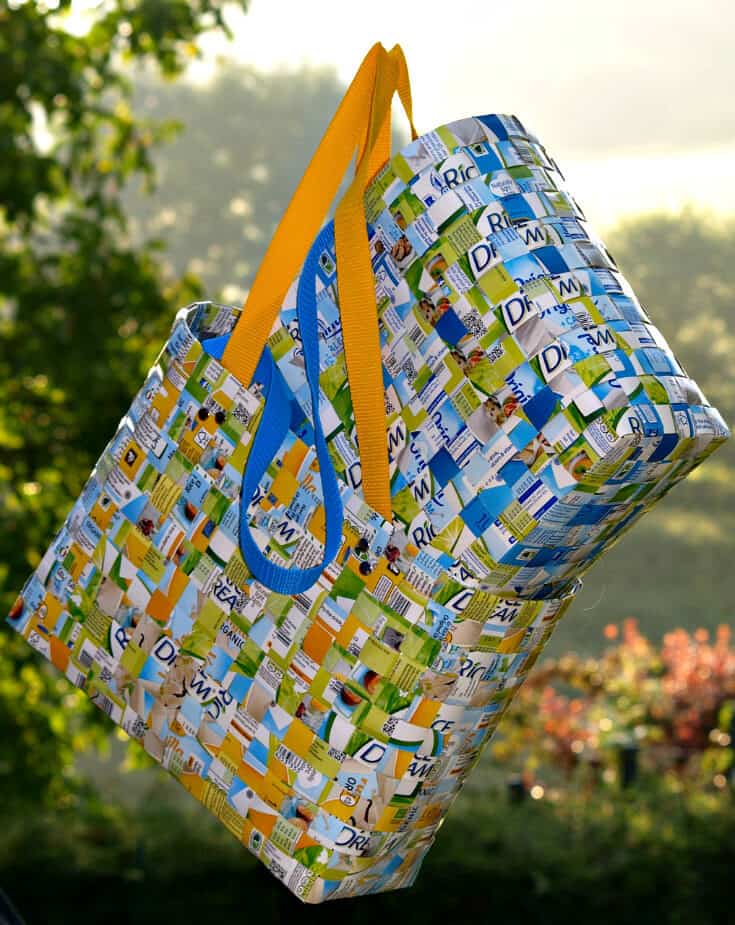
REDUCE/REUSE/RECYCLE TIPS
1) Go to the America Recycles Day website, enter your zip code and Join An Event (most are on/around Nov. 15) in your community. Near our home, we located more than a dozen events ranging from Aluminum Can Round-ups benefitting local schools to metal and electronics recycling.
2) Visit the Earth911 site to learn ways to dispose of unusual household products ranging from paint thinner and used batteries to broken computers and cell phones. Many common household items contain horrible chemicals that seep into the ground and contaminate a community’s drinking water, but they can help you locate a place to recycle them safely.
3) Got something to get rid of that others might be able to use? Goodwill will take just about anything you’re willing to donate and give you a tex receipt. But if you don’t want to deal with the trouble of loading, driving, etc. we recommend Freecycle. There, you can list just about anything (we’ve given away mirrors, kids’ play sets, old toys, and more) and people will come pick it up!
4) Make it a point to buy products made from recycled materials. Do research online to find companies that specialize in eco-friendly items, including Alchemy Goods, Ecoist, Eco-Artware.com, Greenandmore.com, and TerraCycle, Inc. Make sure your money is going to companies that believe in and support the development of a green economy.
5) Start composting! We compost virtually everything, from dead flowers and plant-based kitchen scraps to shredded paper and used coffee grounds. It’s remarkably easy to do, helps to reduce waste going to the local landfill, and provides a nutrient boost for your flowers and/or vegetable garden.
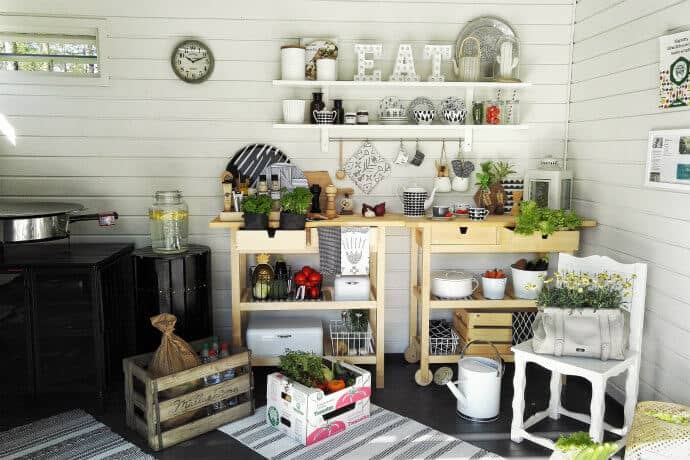
KITCHEN GREEN TIPS
6) Did you know that just by using a lid to cover a pot on the stove top, you can reduce your energy use by up to two-thirds? It also allows you to heat food faster, saving you both time and effort.
7) Simultaneously preparing more than one food in the same pot is another easy way to save time and energy. For example, while you’re boiling pasta you can easily steam some fresh vegetables over the top of the pan.
8) Paper products account for about a 1/3 of the waste commonly found in landfills. Sponges, washcloths, and towels are cheaper, reusable, and take up less space than paper towels. And when they get dirty, they’re easily disinfected by boiling them in hot water. No waste necessary!
9) Before there were chemical-laden cleaning products on grocery store shelves, people used natural things to clean. Lemons have AMAZING antibacterial qualities and will leave your kitchen smelling fresh as a spring morning. Even tough stains on kitchen countertops can be removed by simply leaving lemon juice on the stain for a few minutes, and then wiping it away with a wet cloth.
10) When you’re not using them for compost, used coffee grounds are an easy, greener alternative to poisonous pest repellents. Just sprinkle some grounds around any areas of the home that are prone to ants and you’ll get rid of a pesky problem without inhaling toxic fumes.

11) Still have more coffee grounds to spare? You can use them to help remove grease and stuck-on food remnants from your pots and pans. Just mix the grounds with a little water and the coffee’s abrasive, acidic properties will make relatively cleaning quick and painless.
12) Keep the oven door shut! When baking, try to resist the temptation to peek at those cookies every 2 minutes to see if they’re ready to nom yet. Opening the oven door lets valuable heat escape and prolongs the time it takes for the food to cook, thus wasting a considerable amount of energy.
13) The microwave is your friend. Microwave ovens use up to 80% less energy than a conventional oven does. It also cooks faster, leaving you more time to commit to other environmentally-friendly activities!
14) Forgo your desire to be the next Martha Stewart and toss out all those fancy-shmancy cooking gadgets. Using good old-fashioned elbow grease is the most energy-efficient way to cook. For example, use knives instead of food processors, spoons rather than electric mixers, etc.
15) Baking soda and vinegar are not only great cleaners, but both are non-toxic and remarkably cheap. To clean counters, simply sprinkle baking soda on a wet cloth and wipe it down. Vinegar can also be used as a disinfectant. Use a little lemon juice to help cover up the vinegar smell.
READ MORE:

ECO-FRIENDLY BATHROOM TIPS
16) A mixture of vinegar and water makes a miracle cleaner when it comes to getting rid of mildew buildup in the tub. Simply spray the solution on the problem area, let sit, then wipe away. Soap scum can be removed with a baking soda paste composed of baking soda and dish soap. Scrub with a toothbrush to remove stubborn patches.
17) Newspaper works great for cleaning mirrors and glass in the bathroom, and won’t leave behind a trail of lint like paper towels do.
18) Instead of using powerful (but harmful) chemical cleaners to clear a clogged drain, use a combination of baking soda and vinegar. First manually remove what you can from the drain, then add the vinegar mixture. Let it sit for 15-30 minutes, and then run some hot water down the drain.
19) To maintain a sparkling clean toilet, use a mixture of baking soda and vinegar rather than harmful chemicals. Scrub the toilet once a week to keep it at its cleanest. Add dish soap to the mix to tackle tough stains and make your sink sparkle!
20) There’s nothing grosser than a dirty bathroom floor. Try mopping the floor with a mixture of baking soda and warm water. You can add some lemon juice for a fresh scent that’s WAY better than Pine-Sol. Hang your bath mats to dry after every use in order to avoid a build-up of mildew.
READ MORE:

HOME ENERGY-SAVING TIPS
21) Ceiling fans can be used to create a killer breeze, or simply to circulate the air from your AC throughout the house more efficiently.
22) Opt-out of any catalogs or subscriptions you don’t read or could read electronically instead. You can also opt out of receiving unsolicited junk mail by calling toll-free 1-888-567-8688 or visiting www.optoutprescreen.com (both operated by the major consumer reporting companies).
23) Replace any of your old appliances with Energy Star qualified appliances, including refrigerators, microwaves, washing machines, dishwashers, etc. These energy-efficient models use approximately 50% less electricity than comparable models.
24) In addition to thwarting peeping toms, closing your windows, shades, and blinds keeps the sun from turning your room into something Dante might have dreamed up. When night falls, you can open the ones oriented toward prevailing winds in order to catch the cooling cross-breeze.
25) Change your air filters regularly (once every three months is best if you have pets in your home) and upgrade your water heater. Then install a programmable thermostat to regulate temperature.

26) Insulation keeps the air in your home from escaping through the ceiling, so improving it can actually benefit your energy costs ll year-round. Make sure you seal the ducts around the vents and registers, where we can lose up to 20% of our cooled air. You can also get a tax credit worth 10% of the cost of materials, up to $500!
27) Small appliances such as TVs, cable boxes, Blu-Ray players, and video game system use energy even when they’re turned off. Consider unplugging items that won’t be used regularly, or get a power strip with switches to save even more energy.
28) Shield yourself from the brutal heat of the sun by planting deciduous trees on the east and west sides of your home. The broad leaves will provide shade to your house in summer, while still allowing warmth to shine through in the winter.
29) Incandescent light bulbs create as much heat as they do light, and home electronics stay hot even when they’re on standby. So shut ’em off completely to save energy and cool things down a notch. And consider replacing old bulbs with Energy Star bulbs, which produce 75% less heat.
30) Conduct a Draft Audit by inspecting all the rooms in your home to see where outside air may be coming in. Inspect all windows and doors, plus look for cracks in windows, walls, ceilings, etc. Next, seal windows and doors with weather stripping or plastic sheets, and fix any remaining cracks with caulk.
READ MORE:
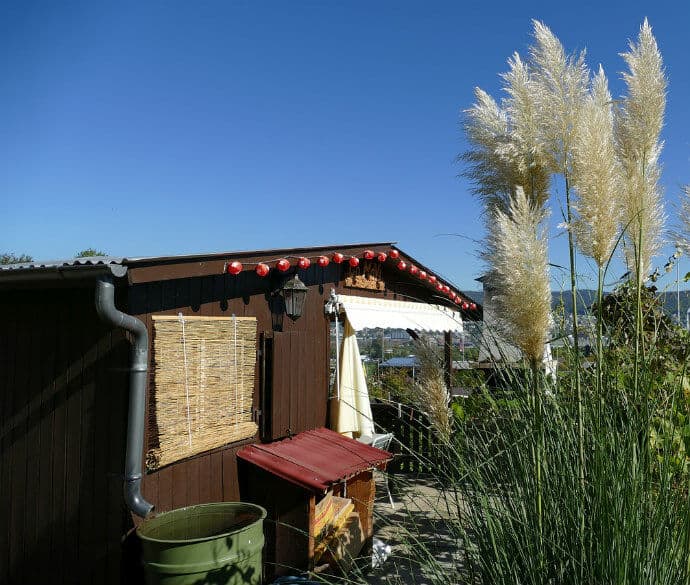
WATER-SAVING TIPS
31) A full bath may be luxurious and relaxing, but it’s also very wasteful. An average bathtub can take up to 70 gallons of water to fill, while a 5-minute shower uses just 10-25 gallons. Better yet, why not shower with your partner? Together, you’ll save nearly 100 gallons of water!
32) Installing a low-flow shower head costs just $20, but this simple screw-on attachment can reduce your water usage by 50-70%! Better still, installing a DIY shower shutoff valve will allow you to cut the water off while you get soapy without having to re-tweak your temperature.
33) Any toilet manufactured before 1992 uses at least 3.5 gallons per flush. Modern low-flow toilets use less than 1.28 gallons, saving 60% of the water. A new toilet may cost a few hundred bucks, but it will save you several thousand dollars in water consumption over its lifetime.
34) A big part of our water problem isn’t just that we over-use, but that we don’t make the most of the water we have. Put a bucket in the shower to catch the grey water, then use that to flush your toilet. My grandmother used to wash dishes in a plastic bin, then pour the nutrient-rich water over her plants.
35) According to the EPA, a typical single-family home uses about 30% of their water to keep their lawn green. In many cases, more than half of that water is being wasted due to evaporation and runoff caused by overwatering. Instead of high-maintenance lawns, consider using the natural landscaping of your region, or perhaps creating an edible garden to offset your water usage.
READ MORE:
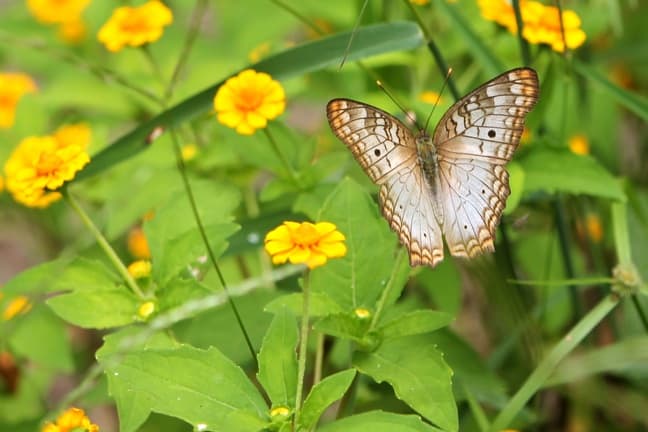
ORGANIC GARDENING TIPS
36) Choose native plants with brightly colored red, purple and yellow flowers if you want to attract birds and provide shelter. Providing a source of water, whether via natural springs, birdbaths, or ponds, will also help to attract birds and other wildlife.
37) Create a simple DIY rainwater harvesting system that collects water run-off for use on your lawn and garden. All you need is a 50-gallon barrel, a screen for filtering, and a spigot. We found someone who sells them pre-made for $50, and now we collect 150 gallons every time it rains!
38) Recycled containers (such as yogurt cups, egg cartons, and toilet paper rolls) are great for starting your seeds indoors. Simply use a nail to poke drainage holes in the bottom, and ensure the containers are thoroughly cleaned before planting.
39) Start composting by collecting non-meat food scraps and plant debris outside in a bin . Moisture, heat and aeration will help to speed up the process. You can also use coffee grounds and dried, crushed up eggshells to make a great organic fertilizer! Simply spread some around your plants and flowers, or mix some into the soil before planting.
40) Let your garden truly go green by minimizing the area of turf grass. Reduce chemical use by using natural organic weed control (vinegar, salt, and dish soap) and fertilizer (horse manure is free and works great for improving soil over the winter). You can also let the birds be your pest control for ants, spiders, and other insects.
READ MORE:

GAS SAVING TIPS (FOR ROAD TRIPS)
41) There’s a widespread rumor that using premium fuel helps to improve your car’s fuel economy. This is totally false. If you believe this, I know some BP executives who have a story about the 2010 Deepwater Horizon oil spill not impacting wildlife to sell you.
42) Another crazy rumor is that you need to warm your vehicle up for 15 minute in colder months before driving it. This is also not true. The only reason to warm your car up is so that you’ll be toasty inside it and the windows will defrost. If you really want to conserve energy, wear warm clothes for the former and use a pitcher of hot water on the latter.
43) The myth that it takes more gas to start a car than it does to let it idle is one of the biggest misconceptions about fuel economy. Idling uses 1/4 to 1/2 a gallon of gas in an hour, costing just a couple of cents per minute. So if you’re stuck in stop-and-go traffic, it’s not worth it to stop and restart your car. But if you’re going to be idling for long, you’ll probably want to shut it off.
44) There are tons of “miracle products” at the gas station– known as aftermarket additives– that make bold claims about improving your gas mileage. But both Consumer Reports and the Federal Trade Commission have repeatedly refuted such claims. The only thing these products really do is lighten the load on your wallet!
45) If you really want to save money on road trips, the best things to do are drive sensibly (aggressive driving lowers gas mileage by 33%), maintain a steady speed, and remove excess weight (100 pounds in your trunk reduces your mpg by 2%). In terms of upkeep, keep your engine properly tuned, tires properly inflated, use your car’s recommended grade of motor oil, and and consider upgrading to a hybrid vehicle such as a Prius.
READ MORE:
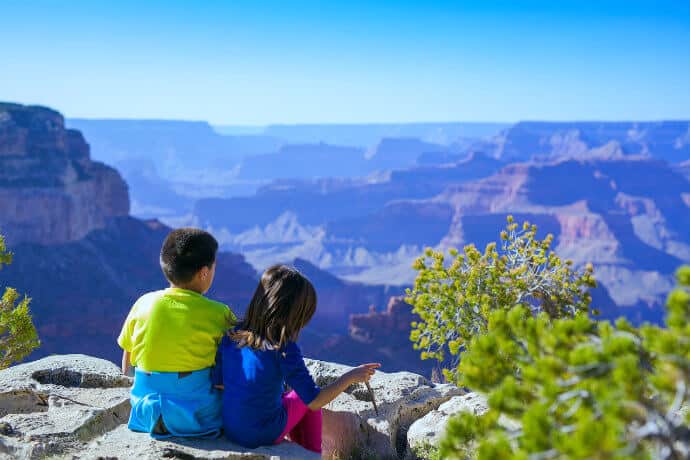
GREEN TRAVEL TIPS
46) Whenever you leave your hotel room, always turn off all the lights, heater or air conditioner, and TV. You can also close the curtains to keep the sun from heating up the room during the day.
47) Most of us do not wash our sheets and towels or vacuum the floors in our home every day. So why do it when you travel? We love to leave the “Do Not Disturb” sign on the door of our hotel so that the housekeeping staff won’t clean our room every day. This helps to save on cleaning supplies and the electricity used to vacuum and wash linens.
48) Save water by taking a BPA-free water bottle you can refill (LifeStraw works great for countries where water quality may be questionable). It also helps to turn off water while brushing your teeth and shaving, then turn it back on when you’re ready to rinse.
49) Use just one bar of soap for both sink and shower, and always take any unused remnants home for later use. Hotel staff will otherwise just throw them out.
50) NEVER use the hotel’s laundry services, unless you have a full load that needs to be cleaned. Hotels will typically wash each guest’s clothes separately, even if there are only a few items. Washing just a few items wastes a ton of water!
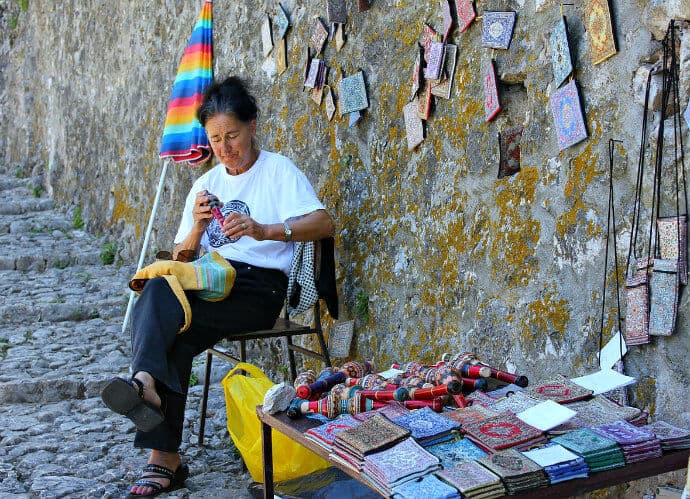
51) If you go hiking, it’s best to do so with a local naturalist guide who can help you understand the ecosystem. If you do go alone, always tick to marked trails to avoid harming native flora. And consider taking a bag along to pick up trash you see along your journey.
52) Shop smarter. Read labels and don’t be afraid to ask questions like, “What is this item made from?” All over the planet, unscrupulous people sell items made from non-sustainable hardwoods, endangered species, and ancient artifacts. You have the power to vote with your wallet.
53) Try to book green hotels and eco lodges that use alternative energy sources, manages its water use and waste effectively, employs local people and uses local products, and has a recycling program. Look for certifications from LEED, Green Globe, Rainforest Alliance, and/or the Global Sustainable Tourism Council to ensure that they follow best practice for sustainability.
54) Buy locally made products, seeking out indigenous artisans and learning about their craft. It’s a much better souvenir than cheap, mass-produced crap from China. And getting to know the person behind the piece gives you a much better understanding of the local culture.
55) Speaking of local culture, embrace it! Try to learn a few words in the local language, listen to local music, eat what the locals eat, and maybe even learn a new dance step or two. Part of the fun of travel is learning how other people love and exploring traditions very different from your own. The more you engage, the more rewarding and transformative these experiences will be.
READ MORE:
RESPONSIBLE ANIMAL ENCOUNTERS
56) Riding elephants is never OK, and it’s actually really bad for their bodies. Most of these peaceful pachyderms are put through a brutal training regimen known as the phajaan, which is violent, traumatic, and designed to crush their spirit. Elephants in the tourist trade (including those who paint on the streets of Asia) are often abused, usually at the painful end of electric prods or bull hooks.
57) Remember earlier, how we suggested embracing local cultural traditions when you travel? It’s also important to be conscious of when local traditions do not align with responsible travel ideals. It may be popular to watch bullfighting in Spain, bear-baiting in Pakistan, and cockfighting in parts of Latin America. But that doesn’t make it ethical for the animals that suffer as a result.
58) Many places in Africa offer “walking with lions” experiences under the premise of helping with lion conservation. This a terrible idea, both for your safety and that of the animals. Often these facilities are breeding grounds for the illicit canned hunting trade! Cuddling an adorable lion cub may seem like a dream come true, but the reality is that it’ll be a hunter’s trophy within a few years.
59) If you’re going to go snorkeling or Scuba diving, make sure the tour operator employs responsible guides. Ask whether they allow divers to touch or stand on coral, chum the waters to attract fish, offer any sort of marine conservation education to their guests, or give back to the local community.
60) Don’t buy products made from ivory (or any other animal part, for that matter). Ivory comes from the tusks of elephants, walruses, hippos and narwhal, and were once traded amongst indigenous people. But now it’s illegal to buy or sell ivory, and doing so means you are directly contributing to the death of one of these increasingly endangered animals.
READ MORE:

ADDITIONAL RESOURCES FOR GOING GREEN
–includes contributions by Bret Love, Carisa Turner, Emma Jane Higgins, Holly Young & Jenni Williams
[ad_2]



